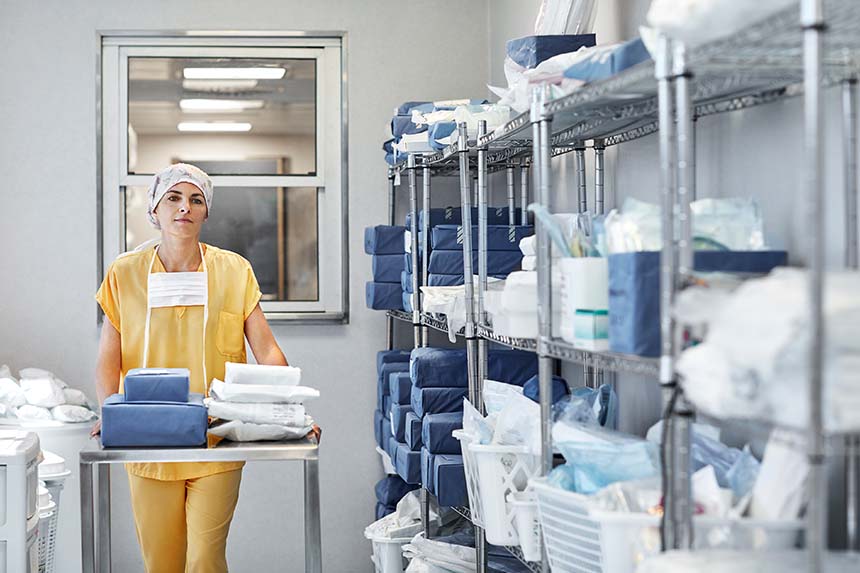Reigning in hospital supply costs & physician preference item spending
Aug 18th, 2020

Supply costs are an increasingly large component of healthcare spending. According to a 2019 SpendEdge report, hospital supply chain costs are expected to exceed labor expenses by 2020. It’s likely, however, that the impact of the COVID-19 pandemic has already caused U.S. hospitals to surpass that prediction in supply chain spending.
While group purchasing organizations (GPOs), streamlined distribution, and better inventory management can produce meaningful supply cost savings, physicians and other healthcare providers can play an equally important role when they have access to the information to make cost-effective decisions.
How can physicians influence hospital supply costs?
Physicians can influence the cost of any given procedure or care episode in a variety of ways—such as through the accuracy of their diagnosis, or the relative effectiveness of their prescribed treatments. The devices, supplies, and tools they use during each care episode can also have a serious effect on hospital costs.
For some physician specialties, like family medicine, supply costs are more standardized than they are in others. Surgical and orthopedic specialties, in particular, tend to report higher average supply costs because of the price associated with some necessary surgical supplies, like prosthetic hip implants or cardiac pacemakers.
The impact of physician preference items (PPIs)
The reason for this variation in supply costs is not related to provider skill, but in choice of supplies—a category in hospital supply chain circles known as physician preference items (PPIs). PPIs, as the name suggests, are preferred tools or other devices commonly used by physicians in their day-to-day practice. While these were intended as a way to ensure that physicians were using the most suitable supplies for their patients, they have increasingly become a costly component of total hospital supply expenses.
According to Definitive Healthcare data, some top hospitals—like the University of Texas MD Anderson Cancer Center—spent as much as $974 million on medical and surgical supply costs as of July 2020. Because physician preference items may be more expensive than comparable alternatives and account for anywhere from 40 to 60 percent of a hospital’s total supply costs, these items often contribute to excess supply chain spending.
What’s more, PPIs may have the same clinical effectiveness as other more cost-effective alternatives and may, in some cases, even be associated with worse clinical outcomes. Some physicians may favor a particular device or brand simply due to long-term use, and not necessarily because the item actually has proven benefits over another.
How can hospitals reduce physician preference item spending?
Rather than eliminate PPIs altogether, healthcare organizations have experimented with other ways to get providers to reduce supply costs. A December 2016 study in JAMA Surgery found that surgeons—given proper information and incentives—could reduce supply costs over time.
All surgeons participating in the study would receive a financial incentive if they could reduce supply costs by 5 percent. The test group was provided with scorecards detailing monthly costs, high-price items used, and rankings of other surgeons’ costs for the same procedure, while the control group received no cost-related information. After one year, the test group was able to successfully reduce median supply costs by 6.5 percent. In contrast, median expenses for the control group rose by nearly 7.5 percent.
Researchers identified two factors responsible for the positive results: better awareness of supply costs, and a willingness to emulate high-performing surgeon peers. While surgeons in the study agreed that it was their responsibility to help reduce costs, those who used the scorecard system had a far better idea of how their preference items and supply requests impacted overall spending. As a result, it was much easier for them to adjust their supply choices accordingly and to choose more cost-efficient items.
How does clinical effectiveness impact hospital supply costs?
Cost awareness is only one component of any strategy to rein in supply costs. The clinical effectiveness of medical devices is just as important, but isn’t as easy to calculate—especially for smaller organizations that don’t have the case volume or analytic capabilities to assess thousands of procedures and outcomes. As a result, many hospitals and health systems turn to third parties that specialize in comparative effectiveness research.
In 2013, UnitedHealth Group, Baylor Health, Dignity Health, and Advocate Health Care created SharedClarity: a joint-venture company that identifies the best-performing stents, defibrillators, heart valves, and other high-cost implantable devices. By combining each health system’s patient data, analysts can determine how each device brand compares in any clinical situation and share those results with member organizations.
Premier Inc, one of the country’s largest GPOs, has a similar program known as the Partnership for the Advancement of Comparative Effectiveness Review (PACER). According to Premier, the initiative saved members an estimated $8.1 million in cardiac stents and surgical mesh from 2014 to 2016.
Cutting supply costs isn’t as simple as finding the lowest price. As the studies suggest, real improvements require a dedicated effort in which supply chain staff, providers, and administrative personnel can share information and determine a medical device’s actual impact on outcomes and spending. Due to the rate of technological and clinical advancements, it’s also a long-term effort. But because of the growing pressure to improve efficiency in healthcare, it’s something healthcare organizations cannot afford to ignore.
Learn more
Interested in learning more about supply chain spending and its impact on hospital finances? Take a look at our trend report, Changes in Hospital Medical and Surgical Supply Costs Year-to-Year. You can learn more about changes in hospital medical and surgical supply costs, including:
- Year-over-year increases in supply chain spending
- Supply costs by both region and hospital bed count, and
- Hospitals with the highest medical and surgical supply costs




